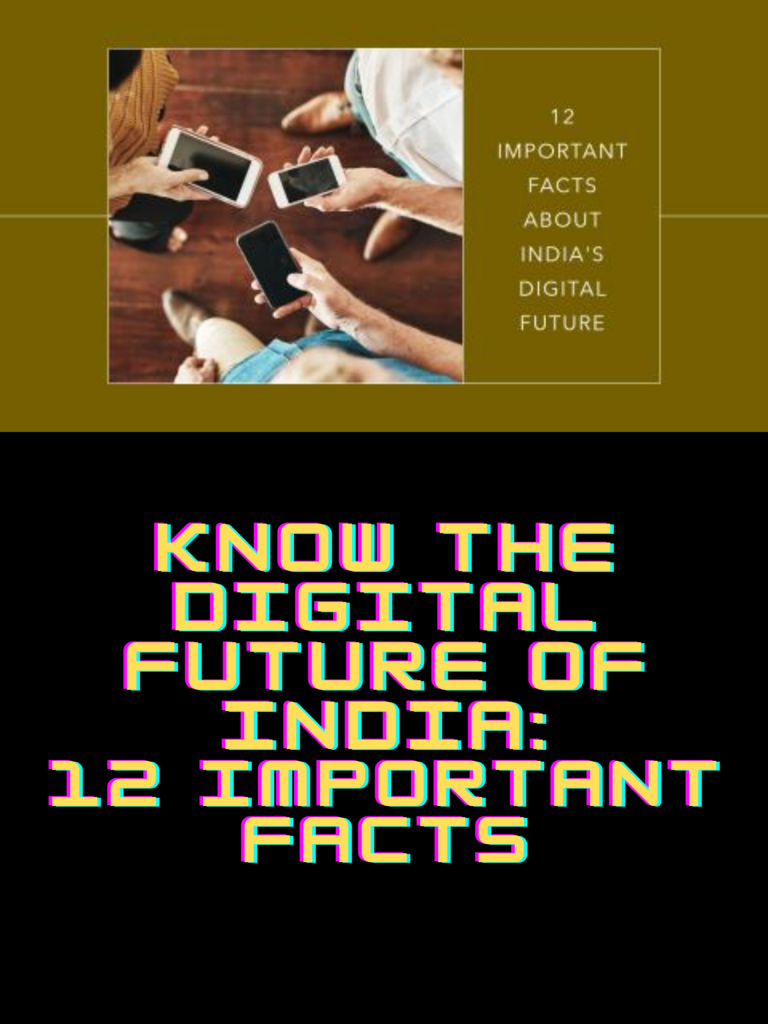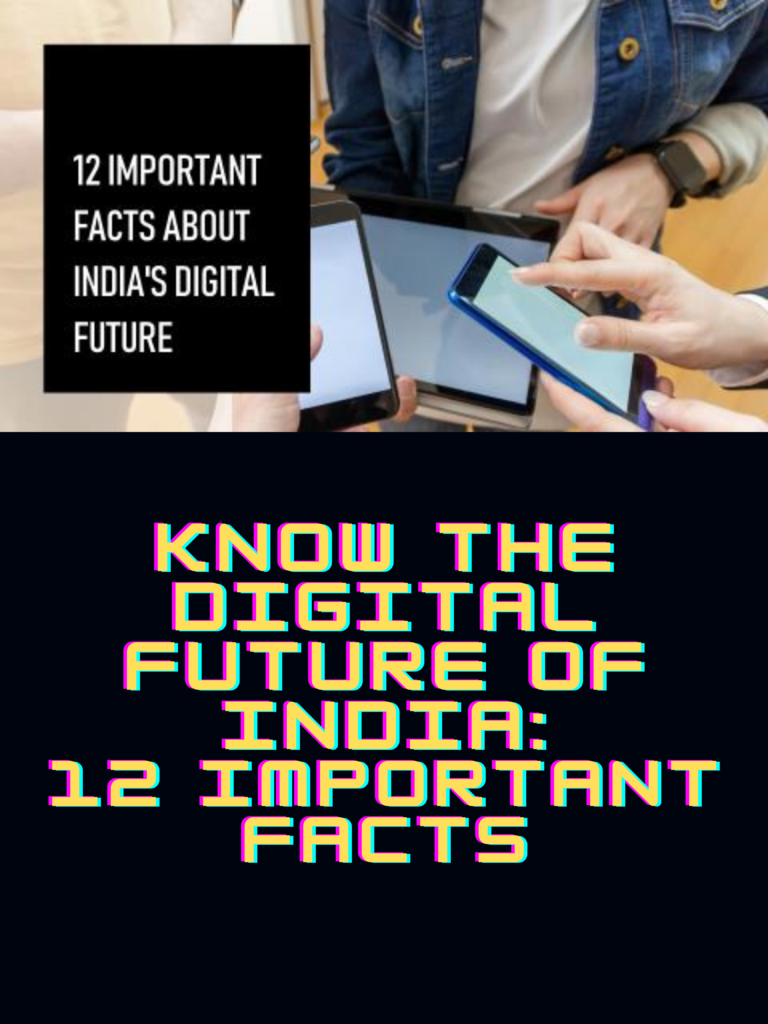Introduction
India’s digital journey has been shaped by strategic budget allocations, trends in digital payment infrastructure, and transformative initiatives. The government’s focus on fostering a robust digital payments ecosystem is evident through budget allocations and key initiatives. Here are 12 crucial points to decode the Digital Future of India.

The Digital Future of India: 12 Important Facts
1. Budget Allocations: Boosting Digital Payments
In the fiscal year 2021-22, the government allocated INR 1,500 crore to the Ministry of Electronics and Information Technology (MeitY) to promote digital payments. A significant portion, Rs 1,300 crore, earmarked for financial incentive schemes, promoting RuPay debit cards, and low-value BHIM-UPI transactions.
2. Boosting Homegrown Products: RuPay and BHIM UPI
The allocation provided a substantial boost to the acquiring segment of the payments business, focusing on promoting indigenous payment products like RuPay and BHIM UPI. This move aimed at enhancing the adoption of digital payment solutions across the country.
3. Inclusive Approach: Digital Payments for Unorganized Sectors–Digital Future of India
A portion of INR 200 crore directed towards promoting digital payments for unorganized sectors, including street vendors. It encompassed sector-specific schemes, contactless payment solutions, and digital payment solutions tailored for feature phones.
4. Continued Focus in 2022-23: Tier II and III Cities
In the subsequent fiscal year, 2022-23, the budget retained the Rs 1,500 crore allocation for further development of digital payment infrastructure. The emphasis extended to promoting innovations in tier II and III cities, acknowledging their significant growth in recent years.
5. Payments Infrastructure Development Fund (PIDF)–Digital Future of India
Part of the budget was allocated to the Payments Infrastructure Development Fund (PIDF), operationalized in 2021. The funds were utilized to reimburse UPI/RuPay, addressing concerns related to the zero MDR (merchant discount rate) policy.
6. Government’s Shift in Focus: DigiLocker and KYC Digitization
The government, in the current fiscal year, has shifted its focus to expanding the scope of documents available in DigiLocker for fintech companies. Additionally, there is an initiative to make the know-your-customer (KYC) ecosystem more conducive to digitization.
7. Industry Requests: Seeking a Larger Corpus–Digital Future of India
Despite government initiatives, the digital payments industry has advocated for a more substantial corpus of Rs 8,000 crore. This includes Rs 6,000 crore for UPI and Rs 2,000 crore for RuPay debit card transactions, covering losses and offsetting MDR for merchants.
8. Digital India Programme: A Catalyst for Change
The Digital India Programme, launched in 2015, has played a pivotal role in transforming India into a digitally empowered society and knowledge economy. The program has contributed significantly to the digital economy, with its GDP share increasing from 4-4.5% in 2014 to 11% in 2023.
9. Budget Outlay for Digital India Programme: 2023-24
As part of the 2023-24 budget, the government announced an outlay of Rs 4,795.24 crore for the Digital India Programme. While this signifies a 37% decrease from the previous year, it underscores the continued commitment to digital empowerment.
10. Pradhan Mantri Gramin Digital Saksharta Abhiyan (PMGDISHA)
A vital initiative under the Digital India program PMGDISHA, aimed at promoting digital literacy in rural areas. The program targets making 6 crore people digitally literate, covering 40% of rural households by including one member from each household.
11. Free Digital Literacy Training in Rural Areas–Digital Future of India
PMGDISHA offers free-of-cost training covering topics such as digital services, internet usage, cashless transactions, digilocker, and other citizen-centric services. This initiative is critical in bridging the digital divide and expanding the reach of digital technologies to rural areas.
12. Performance Evaluation of PMGDISHA: Challenges and Achievements
While around 6.69 million individuals have registered, only 4.3 million have been certified, falling short of the government’s target of 60 million digitally literate people. Despite challenges, PMGDISHA has excelled in states like Uttar Pradesh, demonstrating high registration, training, and certification rates compared to others.

Conclusion
India’s digital journey is intricately woven with budgetary allocations, innovative initiatives, and transformative trends. The commitment to fostering a digital payments ecosystem, coupled with broader initiatives like Digital India and PMGDISHA, reflects a comprehensive approach towards a digitally inclusive future. As the landscape evolves, continuous adaptation to emerging trends will be essential for unlocking the full potential of India’s digital transformation.
Answer Covered People also ask regarding Digital Future of India
1.What are the important facts about Digital India?
2.What is the future of Digital India?
3.डिजिटल इंडिया का महत्व क्या है?
4.What are the 9 points of Digital India?
5.Why is India called Digital India?
6.What is the future of India?
7.What is digital life of India?
8.What is Digital India 5 lines?
Disclaimer
This article has been created on the basis of internal data, information available publicly, and other reliable sources to be believed. The article may also include information which are the personal views/opinions of the authors. The information included in this article is for general, educational, and awareness purposes only and is not a full disclosure of every material fact.
All the information on this website i.e. World Virtual CFO – is published in good faith and for general information purposes only. World Virtual CFO does not make any warranties about the completeness, reliability, and accuracy of this information. These are my views for only information purposes. Any action you take upon the information you find on this website (World Virtual CFO), is strictly at your own risk. World Virtual CFO will not be liable for any losses and/or damages in connection with using our website. For details please refer to our disclaimer page.
Dr. Dinesh Sharma is an award-winning CFO and AI strategist with over two decades of experience in financial leadership, digital transformation, and business optimization. As the founder of multiple niche platforms—including WorldVirtualCFO.com—he empowers professionals and organizations with strategic insights, system structuring, and innovative tools for sustainable growth. His blogs and e-books blend precision with vision, making complex financial and technological concepts accessible and actionable.